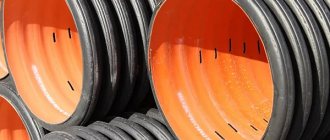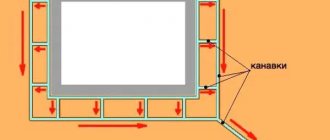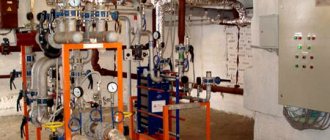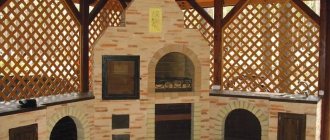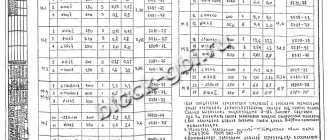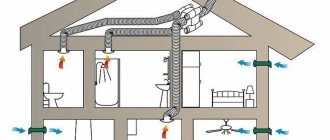SHARE ON SOCIAL NETWORKS
FacebookTwitterOkGoogle+PinterestVk
The gas burner for roofing work is designed to melt the bitumen coating and waterproof the roof during repair work. The tool is also used for drying concrete and brick, heating metal and plastic when bending. To operate the device, a cylinder with working gas is required. Features of the work, choice of tools and recommendations for creating a structure with your own hands - all this information is contained in the article.
A torch for roofing work is usually a torch with a hose and a fuel cylinder
Gas burner for roofing work: what is it?
Very often, during roofing installation and repair work, it is necessary to heat or dry the material, for example, when laying a waterproofing layer, to create a soft roof or to melt bitumen mastic. A roofing gas burner will help to complete these tasks. Using this device, you can perform several types of operations, namely:
- drying surfaces and materials;
The flame is controlled using regulators installed on the device
- cutting or soldering metal parts;
- burning and removing the old paint layer;
- sealing small cracks;
- melting bitumen-based mastic;
- heating sheets of material before laying;
- strengthening of seams and joints;
- other work that requires the use of high temperature.
A roofing torch is usually a torch with a hose and a fuel container. This design is very convenient, reliable and mobile. The volume of the gas cylinder can be different, the hose with the torch has a standard appearance. The flame is controlled using regulators installed on the device.
This is interesting! A roofing gas burner is a specialized gas-air type unit that is used for installation and dismantling of soft roofing coverings, as well as for drying various building structures.
A gas burner is needed to perform those jobs that require the use of high temperature
conclusions
Adhesive tape for home and roof repairs: tips + video
This type of equipment such as a gas or liquid fuel burner can significantly increase the productivity of work when laying a built-up roof (detailed article: “Fused roofing: laying technology, choice of material”). But due to the fact that such equipment is a source of increased danger, work with it should be started only after a detailed study of the instructions and safety precautions. You need to work especially carefully if you are using a roofing gas burner that you assembled yourself. Taking the necessary measures is the key to high-quality roofing work without any incidents or shortcomings in the resulting roofing cake.
Propane burners: professional and budget models
Experienced foremen usually buy expensive professional models, which are reliable and safe to use. But for a self-taught craftsman, simple and small designs are quite suitable for home use. Let us consider further how the choice of this or that equipment will affect the quality of work.
A simple burner is not intended for industrial work, where it must be used almost every day. In this case, you will need a reliable model that can withstand uninterrupted operation and guarantee absolute safety. At the same time, a cheap and simple design in the hands of a skilled and careful craftsman can last for several decades. Especially if you have to use it only once a season.
Regardless of which product is chosen: an expensive and professional burner with a cylinder or a cheap household design, before each use it is necessary to check the tightness of the product, especially the connection points, the fuel supply hose and the mouthpiece for clogging. If you miss even a minor defect, you can provoke serious problems.
Propane burner is very convenient, reliable and mobile design
Helpful advice! Even for home use, you should not buy the cheapest burner. Most likely, this model will have a weak gearbox, which means that the tool’s performance will be on par with the power of a blowtorch. Working with such a device will be very slow.
Which is more convenient: long or short?
If you value ease of use, then purchase a lever roofing burner, in which you do not need to constantly tighten and unscrew the valve. But how long should the handle be?
Thus, the length of the burner is not a style, but an important functional point: short ones, which do not exceed half a meter in length, are usually used to make partial repairs, heat up individual areas and melt the necessary areas of the roof. But for larger-scale work, you will need a burner with a length of at least 80 cm.
Gas burner for roofing on a cylinder or can
At first glance, it may seem that pulling a gas cylinder onto the roof is the most dangerous idea, especially since there are a lot of hand-held burners on sale. In fact, it is the canister burners that often cause burns, fires and injuries. This is due to the sale of fake and cheap Chinese products. The safety of burners with a large cylinder lies in the fact that the container itself is located far from the flame during operation.
When purchasing, do not pay attention to too cheap models. The main problem with such structures is that the technical data sheet indicates an operating pressure of 0.05-0.08 MPa, which during operation turns out to be several times higher. The gearbox installed on the device is absolutely not designed for heavy loads, so a closed valve may simply not withstand such stress.
Gas burners on a can have a combustion temperature of about 700-1000 °C
Gas burner for a cylinder: characteristics of the device
The design of the gas burner includes a handle, a gas supply tube and a metal cup attached to its end. A hose is connected to the handle, through which the working gas is supplied from the gas cylinder. The handle can be made of plastic or wood.
The gas burner bowl is designed in such a way that the flame is protected from the wind during operation. Glasses of different models have different devices, but their operating principle is the same. It is also possible to adjust the flame length. Modern models are equipped with a special gearbox, on which, using a valve, you can control the pressure and fuel consumption.
By pressing the handle lever, the valve opens and gas enters the glass through a tube and hose. The flammable mixture of working gas and air is ignited with a lighter or with ordinary matches. The combustion temperature of a gas burner is very high and can reach from 500 to 1500 °C.
Absolutely all models of gas roofing burners are equipped with an atmospheric air supply system. There is also a device for adjusting operating modes: operating mode and standby mode. For the manufacture of devices, only high-quality and very durable materials are used, since the burner heats up to the highest temperatures. Typically, the weight of the structure is small and varies from 1 to 1.5 kg, so the tool is easy to hold in your hands.
By pressing the handle lever, the valve opens and gas enters the glass through a tube and hose
Modern roof burners differ from each other in the principle of adding oxygen to the fuel. Older models require connection to an oxygen cylinder, which is not entirely convenient. Modern designs take air from the atmosphere. Typically, propane is used as the burner gas, but there are samples that run on pure methane.
It is important! The length of the handle for holding the gas burner should measure about one meter, but no more. In this case, it is necessary that it be equipped with a special holder made of heat-resistant plastic or high quality wood, thanks to which the master’s hands are protected from burns.
Gas burners on a can: description of the tool
The burner in the form of a nozzle on a gas cylinder with a collet connection is used only in strict compliance with fire safety rules, as well as in places where heavy construction equipment is not working and the risk of damaging the burner with the cylinder is minimal.
The simplest models have a combustion temperature of about 700-1000 °C. Oxygen enters the burner from the air, so it is always in short supply. In tools that have a higher cost, the flame temperature reaches 1200 °C, and they have a specific shape of air supply holes that help increase the amount of oxygen in the burner.
Gas burners on a can are equipped with a flexible or rotating tube and a valve for adjusting the flame
Manual gas burners of the ejector type have an even higher flame temperature. In these structures, air flows to the fire due to rarefaction. Thanks to this, the flame reaches a temperature of 1500-1600 °C. It is also possible to regulate the flame length relatively smoothly using a tap. This model is not designed for delicate work, but is great for heating large areas.
All types of gas burners are equipped with a flexible or rotary tube, piezo ignition and a highly sensitive valve for adjusting the flame. Currently, there is a large selection of tools according to their power and fuel consumption.
Gas burner for soldering: features of models
Ejector lamps for soldering have a special design and purpose. Most often, these tools are used by craftsmen for processing non-ferrous metals. The high temperature and adjustable flame of the torch make it ideal for soldering and hardening of metals or any other heat treatment that requires high temperature accuracy and a clearly defined flame cone.
Gas torches are most often used for processing non-ferrous metals
The sizes of canister burners and nozzles can vary significantly, which allows them to be used in various fields. Very miniature models are used for soldering jewelry and thin metal. Although the tool is not equipped with a device for supplying oxygen, it does an excellent job of filigree work.
Medium type devices have a cone thickness of 0.3 to 0.9 cm and are optimally suited for soldering copper and aluminum tubes. Due to their high power, large burners should be used in artistic forging or metal stamping.
For ejector burners, the use of the concept of an unstable flame is not entirely correct. Since, although flashes are possible from time to time, this has little effect on the temperature in the core of the instrument’s flame.
The construction pricing reform should have been completed 1065 days ago.
Good afternoon In the standards of the GESN-2001 collection No. 12 “Roofs” 12-01-002-08, 09, 10 propane gas consumption is 11.8; 6.9; 3.4 kg accordingly are indicated erroneously. The most commonly used burners have an average propane consumption of 6 kg/hour. Based on this, propane consumption (code 542-0042) should be taken at the specified standards in the following amounts: standard GESN-12-01-002-08 - 41.4 kg, 09 - 27.6 kg, 10 - 14.4 kg. QUESTION: is there official confirmation of these figures?
6 kg/hour - what kind of consumption is this, where did it come from? According to the passport or something? Excuse me, have you ever been on a roof or waved a torch? I was and waved a lot... The operating mode in the summer is this: 30% at idle (while you are preparing the next roll, cutting it, trying it on, moving on) and with connections - all 50%. In winter, however, the consumption increases sharply - 1.5 or 2 times (you have to warm and dry the base and warm the freezing cylinders). Try to negotiate with the Customer for compensation for gas, but in practice, during roofing work, the cost of gas is a small part of the cost of the work, so you shouldn’t push too hard.
The customer, as a rule, agrees, and then the switchgear comes and says: “Who are you to add gas to the state price?” That's how it was for me. And I read about such an expense in Grand Stroy-Info in the “Consultations and Explanations” magazine. It was all written there, however, without reference to an official source. So I’m wondering how the inspectors will react to this?
And there is no official source. Even in the standard database, propane butane costs are left unchanged. So refer to “Consultations and Clarifications” No. 2-2004, pp. 12-13.
Again about propane consumption. In the old edition of TER, to the prices for installing and repairing roofs made of fused materials, we added the additional consumption of propane, which our RCTS recommended for us to use. A table was printed in the newsletter, where the additional propane consumption was given to specific prices. Additional consumption was calculated on the basis of the collection “Standard indicators for material consumption. Additions to the collection 12. Roofing” approved and put into effect by a letter from the State Construction Committee of Russia dated April 12, 2000. No. NZ-1512/10. In the new edition of the TER, propane consumption has been increased in these prices, although it is also less than necessary according to the NPRM collection. But at least this way. But in the prices of TERr 58-7-6 and 58-7-7, propane consumption remained unchanged: 6.9 kg and 3.45 kg per 100 m2, respectively. According to the NPRM it is written that it should be 46.2 kg and 23.19, respectively. Question: can I use the table that I used for the prices of the new edition of the database? Here's what the table looks like in the attached file:
Gas burner for roofing: laying material
Very often, roofing felt is used in roofing work, and it is impossible to create high-quality waterproofing from this material without a gas burner. You will also need a tool to cover the roof with welded types of modern materials.
When laying roofing felt on the roof, you can’t do without a hay burner.
The entire process of working with the burner can be divided into several stages:
- First, the preparation of the base for laying the coating is organized; for this it is necessary to clear it of debris. If necessary, you can level the surface using a screed.
- The entire surface is covered with rolled material so that adjacent sheets form an overlap 8.5-9 cm wide.
- Having leveled the material and completed the markings, the rolls are rolled back and secured at the base of the roof using a torch. To do this, the lower part of the roll and the base of the roof are heated with a flame, after which the roll of material is slowly unrolled and pressed against the base.
- To prevent the appearance of wrinkles and air bubbles, it is necessary to walk over the attached canvas with a hand roller.
- At the final stage, you should also use a burner, with which the seams of the material are heated. After this, they also need to be compacted with a hand roller.
Before using the roof burner, you need to familiarize yourself with several important points:
- Do not use the device at a temperature of 15 degrees below zero;
- if roofing work is carried out at low temperatures, then it is allowed to use a liquid fuel burner;
Before using the roof burner, you need to familiarize yourself with several important rules
- the use of a gas burner with high technical characteristics for roofing makes it possible to lay about 500-600 m of roofing material per day;
- Since the process takes place in the open air, the burner must operate smoothly and have reliable protection from being blown out by the wind.
Related article:
Petroleum bitumens for construction and roofing (GOST)
Bituminous material provides waterproofing of complex structures where other materials cannot be used.
Propane consumption per 1 m2 of waterproofing
Everything sooner or later falls into disrepair. Time passes, the integrity of the roofs is compromised, stains form on the ceilings, and the plaster crumbles. Your once expensive renovation is suffering, and it doesn’t matter what you have on the ceiling: lime, tensile structure or sheets of plasterboard. Everything deteriorates to a greater or lesser extent, especially the residents of the top floors of high-rise buildings face this fact. To repair the roof, modern waterproofing is now used, instead of the usual roofing felt. They are presented in roll materials that are joined when melted. The TechnoNIKOL company presents several types of glass insulation or hydroisol. They differ in both the base (canvas and fabric) and the method of coating (film or sprinkling). You have the opportunity to choose waterproofing that suits you in terms of technical characteristics and price.
Gas burner: price and characteristics of some popular models
Gas-air burners for roofing are the safest tools. They are easy to use, lightweight, and capable of creating a flame of sufficiently high power. Modern manufacturers offer models that operate without oxygen:
- GG-2 – propane burner for the roof. This is the best option for craftsmen who perform repair work themselves. It has an acceptable cost;
- GG-2U is a device similar to the previous version, but this model is characterized by a shortened version of the gas supply hose for the gas burner. This device is ideal for performing work in hard-to-reach areas of the roof, as well as for gluing joints;
Before purchasing a burner, it is important to read the specifications of the model and check the quality certificates
- GG-2S is a model that belongs to professional tools and runs on propane. The main advantage of the device is that the device can be used even in strong winds. The device is equipped with two valves and consists of two housings, making it easier to control the operating modes of the device;
- GGS1-1.7 is a universal design, which, despite its small size and weight, is characterized by a high degree of performance. The device can only be used on flat horizontal areas;
- GGK-1 - this burner is heavier than previous designs and is equipped with a very durable glass. This model is suitable for burning old paint, wooden surfaces, as well as for performing waterproofing work. Fuel is supplied using a special lever.
- GGS1-1.0 is used for small works of insignificant volumes. Optimally used on roofs with a large angle of inclination;
- GGS1-0.5 is used for minor repair work. The model is characterized by low fuel consumption;
- GGS4-1.0 consists of four bells, thanks to which the entire roll is heated simultaneously. The use of this option allows you to increase labor productivity and save fuel;
Gas-air burners for roofing are considered the safest tool
- GV-3 is a propane torch designed for welding and even manual soldering of metal. The diameter of the glass is 5 cm;
- GV-111R is used for melting bituminous materials and firing a layer of paint.
- GV-550 and GV-900 are very easy-to-use designs that differ from each other only in the maximum flame length. The first model is more suitable for performing tasks at the junction points of the roof, and the second device allows you to work while standing at full height, since the length of the torch reaches 90 cm;
- GV 500 is used to perform surfacing work during laying of roofing materials. This model melts bitumen with ease. The flame temperature of the GV 500 gas burner is 300 °C;
- GV-850 is a burner that has a special valve, thanks to which you can precisely regulate the amount of technical gas supplied from the cylinder. There is also a lever installed here, with which the master adjusts the length of the torch. This gas burner does not operate on pure propane, but on a mixture that contains technical oxygen. The price of a gas burner for roofing GV-850 is 1700-2200 rubles.
As you can see, the choice of gas burners is very wide, and where to buy a burner: in a store or on the website depends on the wishes of customers. The main thing is to read the specifications of the model and check the quality certificates for the product.
Helpful advice! GV class models are suitable for heating non-ferrous and ferrous metals, melting bituminous materials in rolls when performing waterproofing and roofing work, as well as in cases where the use of only propane is required.
Gas burners are easy to use, lightweight, and capable of creating a flame of sufficiently high power.
Consumption of a propane cylinder for domestic purposes
When purchasing household propane cylinders, the question often arises: what will be the propane consumption?
To answer this question, you need to know the volume of gas in the cylinder.
How much gas is in the cylinders?
*Data taken from the stamp on the cylinders.
Gas consumption in gas stoves
To determine how much gas your gas stove consumes, you need to refer to the technical documentation of the stove.
For example, a Hephaestus PG 900 gas stove with 4 burners has a maximum gas consumption of 486 g/h (or 0.486 kg/h). Therefore, if all 4 burners are turned on to maximum, then a 50-liter cylinder will last for 44 hours (the amount of gas in the cylinder is 21.5 kg divided by the flow rate of 0.486 kg/hour). Of course, if fewer burners are turned on, then gas consumption will decrease. Consequently, the cylinder will last for a longer period.
Gas consumption is calculated in the same way if in the technical documentation it is indicated in liters or cubic meters.
Gas consumption in boilers for heating a house.
The boiler's gas consumption is calculated similarly to the gas consumption in gas stoves.
How to use a gas burner: safety rules
The operation of gas burners requires strict adherence to safety rules:
- Work with burners is carried out in special clothing and shoes with non-slip soles. You will also need a belt and walking bridges.
- Before using the tool, it is necessary to conduct an external inspection and ensure that the burner, cylinders and connecting hoses are in full working order.
- During use of the device, only one gas cylinder may be present at the work site.
- Do not stand in front of the nozzle while igniting the gas in the burner. The direction of the metal cup must be such that the fire cannot touch anyone nearby, the gas cylinder and the connecting hoses.
- If you use weldable materials, you must ensure that they do not overheat and do not catch fire. It is necessary to ensure that only the lower part is heated; the material should not be allowed to soften completely.
- The burner can only be lit with matches or a lighter.
- While working with the device, the master is prohibited from going beyond the boundaries of the workspace, as well as going down or up the scaffolding.
Extinguishing the tool occurs in two stages: first, the gas supply is shut off, and then the locking lever is released. Even after a short break in operation, the device should be extinguished. If there is a significant break, then the gas supply must be shut off at the cylinder itself.
Before using the gas-air burner, it is necessary to conduct an external inspection and ensure that it is in full working order.
Helpful advice! If the mouthpieces or connecting hoses are clogged, the device cannot be used, as kickback and popping noises may occur. If backlash occurs or the equipment overheats, you should immediately stop working and turn off the fuel supply to the cylinder. You can cool the instrument by immersing it in a container of water.
User manual
All operations with an acetylene torch can be performed by trained personnel certified in knowledge of the rules of PB 03.273/99 and other industry and regional regulations for work at facilities under the jurisdiction of the Gosgortekhnadzor of the Russian Federation.
When performing work using gas cylinders, welders are required to comply with strict fire safety measures: do not throw them away without supervision, do not place them near hot springs, with oxygen or other flammable gas mixtures.
Before starting welding work in the premises, it should be thoroughly ventilated before/during/after the welding process. Before carrying out work, all necessary permits and permits must be completed.
How to light
The welding process begins by opening the valves on the gas cylinders and regulating the gas pressure using reducers. The best pressure value is 2 atm. With a higher value, it is difficult to adjust the flame.
Open the acetylene valve on the device and ignite the gas. After this, the oxygen valve is smoothly opened and the size of the torch is adjusted according to the regime map for each metal.
Announcements on NN.RU - Construction
Smarty owlets chest of drawers ?dimensions: w720*d466*h750 ?material: made of white chipboard + photo printing ?ball guides - full. Price: 3,690 rub.
I am selling a pipe 630x9 p/w of excellent quality. Available in warehouse in Bogorodsk, Nizhny Novgorod region. Price 40000-42000 including VAT.
Double door wardrobe Smarty Owls ?Dimensions: w700*d450*h2030 ?Material: made of white laminated chipboard + photo printing ?Filling: rod. Price: 5,490 rub.
Solid white silicate brick - for rough masonry. 691 pcs per pallet. Delivery by manipulator throughout the Nizhny Novgorod region. Price: 8 rub.
Base surface requirements
From the surface on which the fused roofing is to be installed, it is necessary to remove:
- potholes and sinks;
- concrete flows;
- irregularities with sharp edges;
- cracks;
- protruding fragments of reinforcement;
- oil and cement laitance stains;
- dust.
Sharp corners of structures, ends of reinforcement, concrete overhangs are cut down and cleaned. Oil stains should be burned off. The laitance film is removed by wet or dry jet-abrasive cleaning. Dust is removed using:
- brushes;
- industrial vacuum cleaner;
- blowing off with a compressor;
- rinsing with water.
Large potholes, cracks and sinkholes are sealed using cement-sand mortar M 150. Small cracks and potholes can be filled with heated bitumen mastic.
The weld coating requires a smooth and even base. Checking the evenness is carried out with a two-meter rod. The presence of smoothly increasing irregularities with a height of no more than 5 mm along the slope and 10 mm across is acceptable. The number of such irregularities should not exceed two per 4 m2 of the total base area.
When arranging a screed under a built-up coating, it is necessary to provide temperature-shrinkable joints 5 mm wide, which should not be located above the joints of load-bearing concrete slabs and the joints of monolithic thermal insulation.
Preparing the base
The correct technology for preparing the roof base for fusing roofing materials has a significant impact on the durability, tightness and wear resistance of the coating. A floor properly prepared for gluing a soft roof must be smooth, dry and dry. To obtain reliable fixation of the material, it is necessary to perform a whole range of measures:
- Cleaning the roof surface from dust, dirt and other contaminants. This can be done by “blowing” the roof using a hair dryer and or by jet-abrasive cleaning.
- Drying the roof base. To ensure that there is no water under the roofing material, it is necessary to thoroughly dry the floors. In dry, sunny weather, evaporation of moisture from the concrete thickness occurs within 2-3 days. You can speed up this process using a hair dryer.
- The seams between the concrete base slabs, as well as all irregularities and potholes, are sealed with moisture-resistant concrete grade M 150.
- The surface of the base is primed with bitumen mastic using a roller to form a sticky film that improves adhesion between the roof being built up and the cover.
Important! Before laying the surfaced materials, it is not allowed to treat the roof base with mechanical brushes, grinding discs and other devices that lead to the formation of grooves on the concrete surface.
MP-20 corrugated sheets - production and areas of application
This profile is used for the installation of wall fencing, including the production of insulated sandwich panels and cladding of walls of buildings and structures during their reconstruction. Galvanized corrugated sheet MP-20 is used for the construction of pitched roofs, suspended ceilings and partitions of industrial and civil buildings.
Unlike other brands of corrugated sheets, which, with the same profile shape, are used for both roofing and wall fencing, MP20 corrugated sheeting is produced in three modifications - type A, type B and type R.



